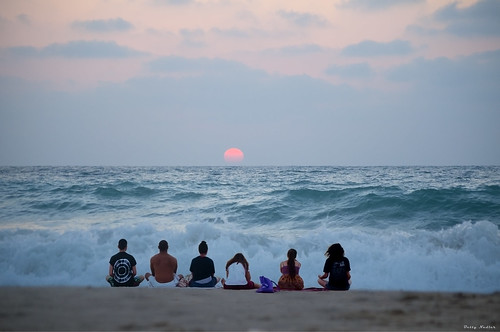Instead, think carefully about your learning goals for each class session. And, think about which portions of your lecture class are best suited for video format.
You can teach your learning goals that don’t require videos through lecture notes, assigned readings, discussion boards, podcasts, and online activities. (You can check out my LMS site for some examples.)
Once you’ve settled on a learning goal you think is well-suited for a short video, the first step is to do an online search to see if someone else has already made an excellent short video on the topic. There’s absolutely no need to reinvent the wheel. If you want to introduce a concept and there is a highly produced, scientifically accurate video freely available online, by all means, use that one.
(For example, I have created 18 videos for teaching race and racism, and you may find some of these useful instead of creating your own video that explains the difference between race and ethnicity or what racial formation theory is.)
If, on the other hand, there is nothing available that conveys exactly what you’d like to teach, it’s time to make your own short video.
How to make own videos for teaching
Making videos for teaching can be fun, although making high-quality videos takes a lot of time. I took over a year to make those 18 videos, and I had a lot of help. Here are a few simple steps to follow to make your videos.
Step 1: Write a script.
Your script should be between 100 and 500 words. It takes about one minute to read 100 words, so that will keep your videos at an ideal length of 1 to 5 minutes.
Step 2: Decide on the media for each sentence.
Look at each sentence in your script and decide on the best way to convey that sentence. There are at least four possibilities: 1) live-action; 2) still images; 3) slides with words; and 4) pre-recorded videos.
Our brains use two primary channels to take in information – audio and visual. We can use both channels simultaneously but can only take in input on one type of channel at a time. Both listening to and reading words are on the audio channel. So, we can listen to audio and look at an image. But, we can’t listen to audio and read words at the same time. Thus, if you show words on the screen, use the same ones you are speaking, and keep the words minimal.
Step 3: Create a story board that assigns media for each sentence in your video.
I use PowerPoint for my story boards, but you should use whatever technology is easiest for you. Some people like to use Excel sheets for story boards, for example.
 |
| Photo by Andrea Piacquadio from Pexels https://www.pexels.com/photo/photo-of-woman-holding-brown-book-with-her-child-3818561/ |
Step 4: Start with still images.
There are tons of free images available on sites like pexels, unsplash, and flickr. You can also find historical images in wikicommons. Try to find images that add value to what you are saying. If you are talking about emotional bonds, for example, you can show a photo of a mother and child. The image reinforces the message. Look at each sentence and decide if it can be conveyed using an image.
Step 5: Add in one or two pre-recorded videos.
Pexels and other sites also have free videos available that you can record your voice over. The use of moving images instead of still images can keep the viewer entertained for longer periods of time. There may also be concepts that are better captured through movement such as the movement of boats across water to discuss migration via sea routes.
Step 6: Add in slides with words, phrases, or figures that are critical.
Your slides with just words on them should be minimal. But, if there is a definition, concept, sentence, or figure students need to see, include a slide with that concept.
 |
| Example of a slide that includes a definition and an image. |
Step 7: Include some live-action
Live-action involves you speaking. When students see your face, it creates a human connection. So, having some live-action is useful. It can be a good idea to include some live-action at the beginning or in those places where you can’t find an image that works well.
As should be clear, making good videos takes a lot of thought and time. So, only make videos for your classes if you have determined you really need them. Otherwise, use alternative methods of conveying information.



